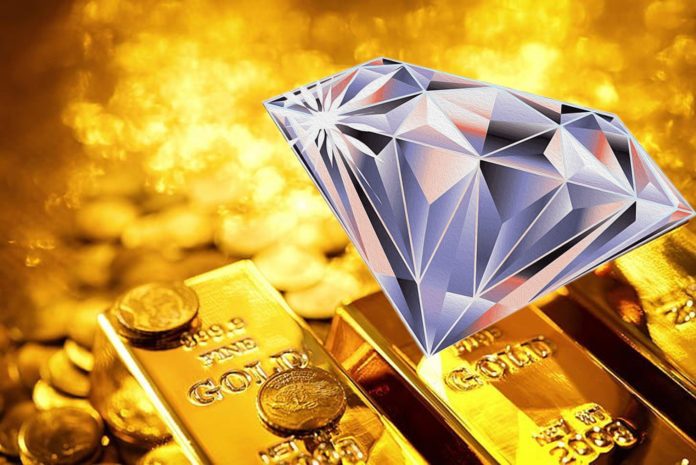By Journey Man
India is gold country. Everybody in India loves gold. Interestingly, India is not one of the major manufacturers of gold, never has been. There are not too many gold mines in the country, yet the amount of gold this country has, in official store and in private hands, is possibly the highest in the world.
It is estimated that Indians, in private, have more than 25,000 metric tonnes of gold, mostly in jewellery form. On an average, each year, India imports 800 to 1,000 metric tonnes of gold. It is a cultural thing, it is said.
Similarly, India may have been the first country in the world where diamonds had been mined well over 3,000 years ago. But overall the gem, highly desired worldwide, never really matched India’s craze for gold and never really caught on as a household favourite.
Today, India manufactures almost 70-80% of the world’s cut diamonds, but most is for export. Uncut diamonds from as far off as diamond field of South Africa and South America, come to diamond cutting and polishing units of India, mostly in Surat in Gujarat, and are exported back. The diamond trade is huge, despite the domestic market for diamond having not developed.
Lab-grown diamonds
Even machine made diamonds are in vogue in India. These diamonds are different, not as expensive as natural ones, and many of them are used as industrial diamonds, used in cutting tools. That is De Beers territory around the world.
Diamonds today are grown in special machines, part of the industry that barely existed 10 years ago but, thanks to improved technology, has seen explosive growth. These are called lab-grown diamonds (LGDs). They so closely resemble natural diamonds that even experts have to look closely.
It has been said that natural diamonds and lab-grown diamonds are so similar that once, even after a lab test there was a confusion about the origin of a diamond. The diamond had to be tested twice to make sure that it was lab-grown.
Natural diamonds are formed at great heat and pressure deep underground and, since the 1950s, scientists have been trying to recreate that process above ground – resulting in two techniques.
The High Pressure High Temperature (HPHT) system is where a diamond seed is surrounded by pure graphite (a type of carbon) and exposed to temperatures of about 1,500C and pressurised to approximately 1.5 million pounds per square inch in a chamber.
The second process is called Chemical Vapour Deposition (CVD) and involves putting the seed in a sealed chamber filled with carbon-rich gas and heating to around 800C. The gas sticks to the seed, building up a diamond atom by atom.
While those techniques emerged in the late 20th Century, it’s only in the last 10 years that the process has been refined so that lab-grown diamonds can be made at the right price and quality to be sold as jewellery.
In the beginning, it was harder, because there were very few machines and very few scientists able to do it… over the last seven years, as more expertise became available in the market, we’ve seen really big growth.
Since the early 2000s the cost of producing lab-grown diamonds has halved every four years.
These days, a one carat diamond – a popular size and common in engagement rings – made in a lab would be around 20% cheaper than its naturally-formed equivalent.
Those falling costs have attracted entrepreneurs. India has long played a key role in the diamond industry – it’s estimated that nine out of 10 of the world’s diamonds are polished in Surat
Now the government wants India to become a key player in the lab-grown diamond business.
The nation already produces around three million lab-grown diamonds a year, accounting for 15% of global production, according to the Ministry of Commerce and Industry. China is the other big producer, with a similar market share.





















